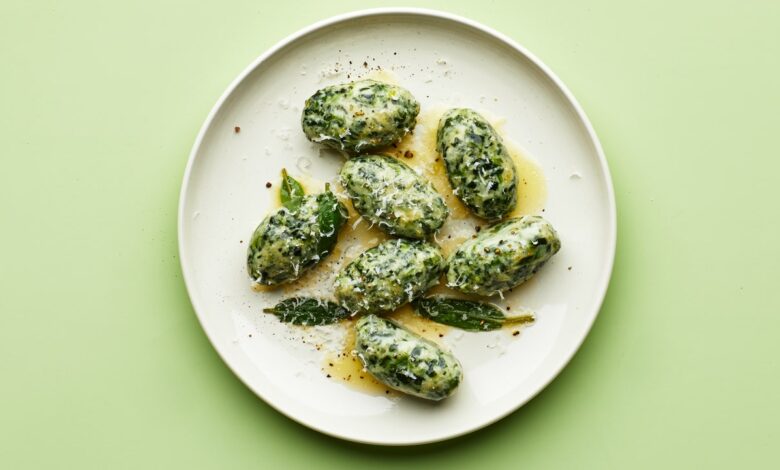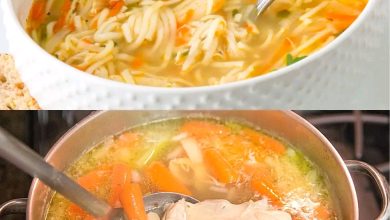
What’s better than a good recipe? When something’s so easy you don’t need one. In It’s That Simple, we’ll talk you through the dishes and drinks we make with our eyes closed. Today, malfatti.
I envy people who can make all sorts of pasta by hand. Being Italian, I’ve always felt I should know how to pull sticky dough into shape as if it were the most natural thing in the world. Sadly, I never quite mastered that effortlessness: Whenever I’ve attempted fettuccine, gnocchi, or pici (the last two are usually considered simple enough even for beginner cooks), my kitchen has ended up covered in flour, my work surface a complete mess, and, worst of all, the pasta thick and chewy.
That was, at least, until I came across malfatti: spinach and cheese dumplings somewhere between gnocchi and ravioli—like a ravioli’s inside.
Literally translated to “badly made,” this pasta is the most elemental of any homemade pastas out there—something so easy to rustle up that even the most inept of pasta-makers (me) can nail it in no time. The name says it all: Malfatti don’t have to be pretty, precisely cut, well-proportioned, or neatly folded. Quite the opposite. They’re meant to be irregular, misshapen, and malformed—and they demand nothing but a handful of ingredients you’re bound to already have. Any time I want to pretend I am really good at pasta-making or I’m feeding more than just myself for dinner, malfatti are on the menu.
Their simplicity stems from their origins, of course: Malfatti are part of the cucina povera repertoire—the humble yet remarkably resourceful “cooking of the poor” that comprises so much of Italian cuisine. Their birthplace is either Lombardy or Tuscany, depending on who you ask (in the latter, you’ll find them under the name of gnudi, which means “naked” in the local dialect—a hint at the fact they don’t come wrapped in dough), although as is the case with many Italian recipes, there are different iterations in other regions too. Different families are also likely to have their own versions: Some replace spinach with chicory, Swiss chard, or whatever green leafy vegetables they have on hand. Others tinker with the sauce they serve them with—the “official” one being butter, Parmesan, and sage—or play with the shape, which can be anything from round to oblong to slightly tapered. Regardless, malfatti ends up pillowy, with a melt-in-your mouth texture that’ll have you coming back for seconds.
Here’s how to make spinach malfatti:
To make enough for four people—or two hungry ones—cook 20 oz. fresh or frozen spinach in a large pot of boiling salted water just until wilted, 1–2 minutes (make it 8–10 if using frozen). Drain, let cool, then squeeze out any excess water, and chop them coarsely with a knife or a blender (skip the cutting if your frozen spinach came prechopped). The squeezing is really the only must when making malfatti: If the spinach retains too much water, chances are you’ll have trouble working the dough later. So give them a powerful squeeze!




